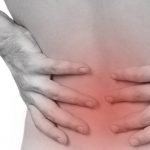Back in September of 1968, 100 women became famous for protesting outside a Miss America pageant — throwing their girdles, bras, hair curlers, high heels, and other “instruments of torture” into a huge trashcan. The media picked up the action, and women nationwide discussed whether they really needed to keep wearing the restrictive and oft-times painful garments. In the case of high heels, the answer at that time, at least among the feminists, was a resounding “no.”
The gist of the argument against heels was political — high heels make it impossible for women to run, so women in heels become easy prey for predatory men. Also, as author William Rossi explains in The Sex Life of the Foot and Shoe, men get erotic pleasure from watching the “sashaying buttocks and undulating hips of the high-heel walk” — a fact that infuriated feminists who believed that the constricting discomfort of heels was too high a price to pay for stimulating male fantasies.
But beyond politics, even back then, it was clear that there were plenty of reasons to avoid high heels. In heels, women got blisters and bunions, twisted their ankles, and hurt their backs. Now, a new problem with heels has come to light: they can cause damage to feet and ankles that shows up years after the shoes have been put to rest.
A study by Boston University and The Institute for Aging Research of Hebrew Senior Life reviewed medical data on the feet of over 3,300 men and women. The researchers found that when older women suffered pain in the back of their feet and in their ankles, there was a strong association to having worn high heels for long periods of time earlier in life. And those who wore pumps or sandals didn’t fare much better, according to the data.
Given that foot pain ranks as one of the top 20 reasons people over the age of 65 go to the doctor, and that more than 43 million Americans have foot problems, these results are significant. In the study, 29 percent of the women reported generalized foot pain on most days, as did 19 percent of the men. Those women who had worn “good” supportive shoes for most of their lives were 67 per cent less likely to experience ankle or heel pain than women who wore less supportive shoes. But in fact, most women had not opted for a life in sneakers. The study found that 64 percent of the women surveyed had worn heels, sandals, or pumps for most of their lives — shoes categorized by the researchers as “poor choices.” In contrast, less than two percent of the men wore shoes in the poor choice category. Good choices, according to the researchers, include sneakers and athletic shoes. Work boots and rubber-soled shoes fall somewhere in the middle.
Research conducted by the American Podiatric Association found that 39 percent of women wear high heels every day. Of those daily wearers, 75 percent have shoe-related foot pain and related problems such as hammer toes, calluses, corns, tendonitis, lower back pain, and plantar warts. The Association warns women that heels higher than three inches put seven times the pressure on the ball of the foot, which can damage bones. In fact, one study published last year in Clinical Biomechanics found that standing in high heels for long periods can result in a deformity of the big toe where it angles in toward the other toes. Even worse, perhaps, is a finding out of the Harvard Medical School that links wearing high heels to the development of osteoarthritis in the knees.
“High heel shoes may alter foot structure and alignment…while sandals and slippers are considered to lack the support of a conventional shoe,” said Dr. Howard Hillstrom of the Hospital for Special Surgery in New York. And Dr. Marian Hannan of the Harvard Medical School adds, “Wearing shoes with poor arch support or shoes that negatively affect any aspect of foot biomechanics could lead to a breakdown in the health and operation of the foot’s musculoskeletal system.”
The researchers say that with every step we walk, the foot absorbs shock from contact with the ground. Most of the stress goes to the heel area (in non high heel shoes). Better shoes offer both cushioning and support so that the heel isn’t subjected to constant pounding , while the worst shoes offer neither.
So back to the political argument. If high heels and women’s shoes in general consign women to foot deformities, arthritis, and extreme foot and ankle pain that make it difficult to walk later in life, just how far have we come from the practice of foot binding in China? The obvious similarity is that just as in China, women today suffer a high price for high fashion, but the difference is that women now do have a choice: they can opt to wear sneakers instead of spikes. At the least, they can wear heels only when absolutely necessary.
If the thought of wearing sneakers horrifies you, don’t despair. It may in fact be possible to wear sandals and pumps of a certain type without suffering damage.
Dr. Hannan points out, “The issue is not simply whether one is wearing a good shoe, but if one is wearing a good shoe for one’s foot type.” Some sandals do, in fact, offer excellent support, and some foot types actually respond better to certain types of sandals than to other shoes. Just make sure that whatever shoes you wear offer good support, plenty of cushioning, minimal lift, and that they fit really well. And if you do wear heels, stretch your heel and calf muscles afterwards, give your feet and legs a soak and massage, take smaller steps, and opt for shoes that at least have straps in the back.
:hc












It would be interesting to hear you opinion on barefooting, and vibram fivefingers. I run part time in vibram fivefingers, and I think how much shock your heel absorbs depends upon how you land when you walk/run.
Fred,
You might want to read “”Born to Run,/a>”” by Christopher McDougall. He talks, among other things, about running barefoot.
I can verify the story of damaging feet in real high heels when young. I did! And, my ob/gyn dr. said the cement floors in homes, stores and offices has had detrimental effects also! He suggested to me to get support pantyhose and wear them with the good support shoes. Because I was home on cement floors all the time I did, and the back, ankle and foot pain went away. I did that for about 8 years, them forgot and I am paying the price today. And I am about the 65 yr. age that is spoken of. Haven’t gone to a dr. about it, but now use orthotics and ankle/foot supports! Not worth it to give men their jollies!! lol
You talk about sandals but what about Birkenstocks? I think of them as being very supportive for the entire foot and yet not binding as some of the more “supportive” shoes are.
I totally agree that heels are the culprit of back pain in most females. Some people just don’t care or don’t think that anything will happen to them, until it does.
Sir:
I have a corn that has developed between my right most small toe, on my right foot, and the toe next to it on the left of the small toe. What, in your opinion, is the best type of product (or ingredients) to get rid of the corn? Thanks in advance.
Very Respectfully,
Dr. Robert Bolmarcich
Well, wearing high heels
Well, wearing high heels today may hurt just a little, but even bigger foot pain may be in store later on. This blog can make more women realized what could be the possible effect when they use high heels more often. Good for me because I am not that fun of high heels but sometimes for the call of compulsory and should wear high heels I sometimes wear but not to often. And because of this blog I will not use high heels unless if it is really needed.